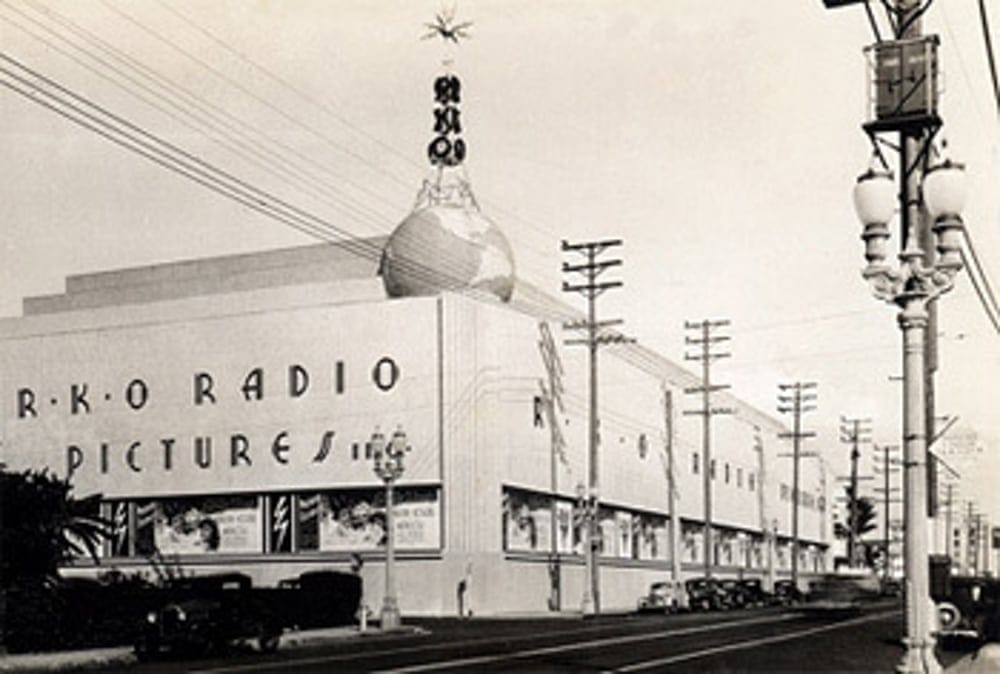Orson Welles: RKO contract

Orson Welles’ notoriety following “The War of the Worlds” radio broadcast generates fevered Hollywood’s interest and much envy. When he waltzes into town, wags are quick to dub him Little Orson Annie.
He turns down an offer from David O. Selznick but signs a unique contract with RKO studio head George J. Schaefer on July 21, 1939, to produce, direct, write, and act in two feature films. It’s a sixty-three page contract. (Which took several weeks to fine tune.)
The studio has to approve the story and the budget if it exceeds $500,000. Welles is allowed to develop the story without interference, cast his own actors and crew members, and has the privilege of final cut – unheard of at the time for a first-time director. Complete creative control at twenty-four years of age. Every one of the thousands of actors and directors who have passed through Hollywood has striven to get the same kind of deal but no one else has ever succeeded.
He spends the first five months trying to get several projects rolling without success. People on the RKO lot start laying bets that he’ll never make a picture. He tries to adapt Joseph Conrad’s “Heart of Darkness,” which he had already dramatized for radio. But there is concern over the budget and the idea to depict it entirely with point of view shots because Welles wants to play both the pursuer Marlow and the corrupt, crazed Kurtz, who he pursues. (Welles had juggled the protagonist and antagonist roles before in his radio version of Agatha Christie’s “The Murder of Roger Ackroyd” as well in “Les Misérables” and “Beau Geste”. Welles juggles the roles within himself all his life.)
Welles considers adapting Cecil Day-Lewis’ novel “The Smiler With The Knife,” a political spy thriller. He wants to make it as a farce about a very likable, attractive, extremely handsome young man who’s planning to be the dictator of America.
Eventually he settles on a story about the next best thing.
Now this is where it gets messy.
Screenwriter Herman Mankiewicz is called in to work on the screenplay. He is recuperating from a car accident with a broken leg and in-between jobs. Mankiewicz claims he revived a long-simmering idea of creating a film biography in which a man’s life will be brought to the screen after his death through the memories and opinions of the people who knew him best. He considers a newspaper publisher the best subject for the story
Welles claims he’d been nursing the idea of telling the same story, showing exactly the same thing from wholly different views. He wants to make it about a big American figure. Howard Hughes is the first choice before he settles on a press lord.
So who’s idea is it to use William Randolph Hearst as the basis for Charles Foster Kane? Does it matter? Why does it matter? (Hearst is the son of a millionaire mining engineer, Welles is the son of a millionaire inventor.)
Mankiewicz had a terrible drinking problem and was dispatched to Victorville in the middle the California desert to dry out and write the screenplay free from distraction, free from the bottle. There’s a great shot of Welles visiting Mankiewicz. Welles sits to the left, puffing on his pipe and smiling. Mankiewicz sits with in a cane wheelchair with his broken leg in the center, wearing sunglasses and a smirk. A nurse wipes his brow. To the right, John Houseman leans back on a chair, screenplay in hand, grinning. All three look happy.
Welles also breaks his leg during production of “Citizen Kane,” directing and acting through many scenes with a heavy steel brace (and no doubt a head full of pain killers). He tells people he was sneaking out of a young starlet’s window in the middle of the night?
How did he break a leg? Was it karma? Was it even true? Did it really happen? Maybe he was acting all along?
What’s the reveal?